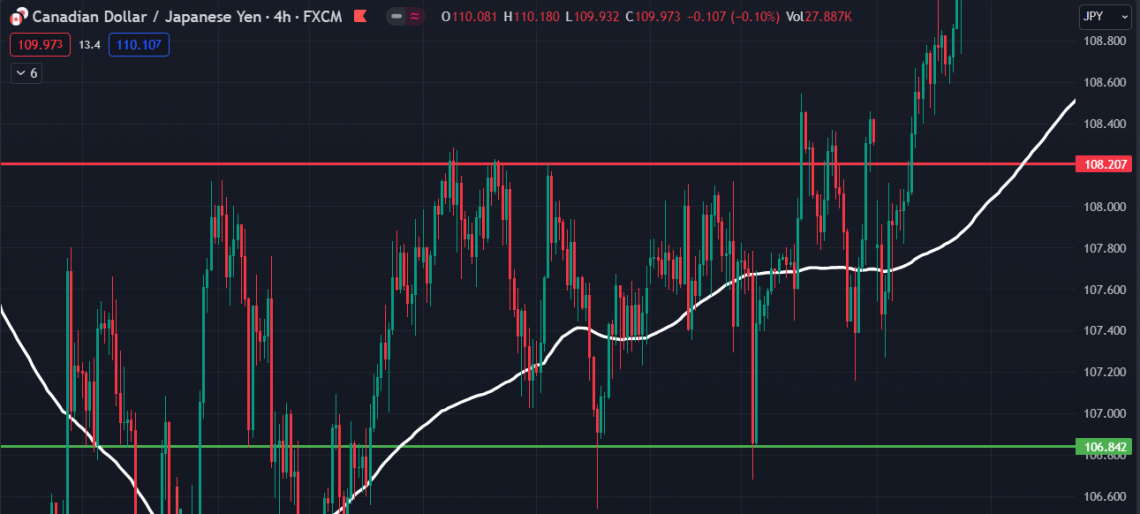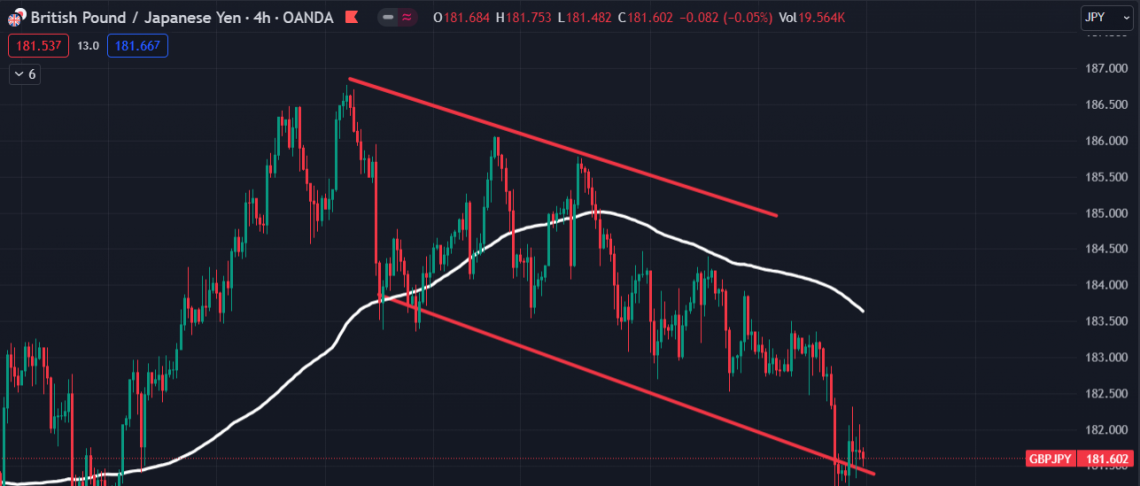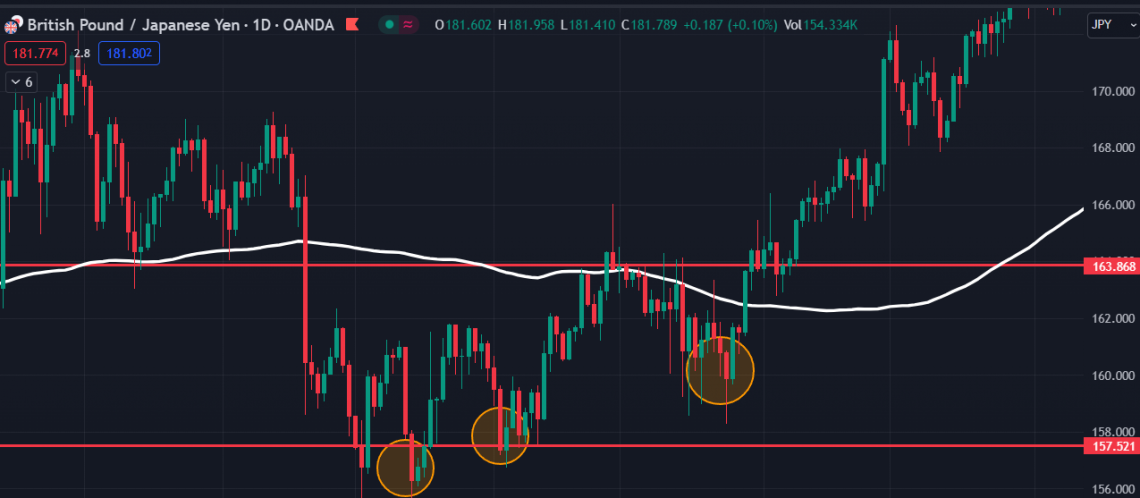Trading Range
A trading range is the difference between the high and low prices during a specific trading period.
What is a Trading Range?
A trading range is when the price of an asset, such as a stock, commodity, or currency pair, stays within a reasonably tight and clearly defined range over time in the financial markets.
A trading range is created when a market consistently oscillates between two prices or levels for a set amount of time. Similar to trend following, which can be used on any time frame, range trading may be seen in all time frames, from short-term five-minute charts to long-term daily and monthly charts.
In contrast to trend following, range trading entails traders taking long or short positions depending on the price relative to the range. Typically, trend watchers will buy during dips in an upward trend and sell during rallies in a downward one.
Range trading enables a trader to do both as the price travels between two distinct levels and (at least in that time frame) does not move upward or downward.
Key Takeaways
- A trading range is the difference between the high and low prices during a specific trading period.
- Range-bound trading is marked by prices remaining within a defined range over time, a fundamental characteristic of this trading approach.
- Specific price levels act as support and resistance within a trading range, indicating where price changes are likely.
- To enter or quit a trading range, traders employ a variety of technical indicators, including volume and price activity.
Types of Trading Range
If a trader encounters a range, he should know which type of range it is to know how to plan his trades. Some types of trading ranges are explained below.
Rectangular Range
You'll observe horizontal and sideways price fluctuations between a lower support and an upper resistance while dealing with a rectangle range. Though not quite as frequent as continuation or channel ranges, this is typical of most market circumstances.
Observe how the currency pair's price movement maintains itself between the upper and lower lines of resistance in the chart below, establishing a plainly defined rectangular range that makes it apparent what standards should be used to identify prospective purchasing possibilities.

On a chart, horizontal ranges should be easy to spot, even without indicators. A chart's common characteristics are an increase in the moving average lines' flatness, combined with clearly defined support and resistance levels and price highs and lows contained within a horizontal band.
Rectangular ranges have shorter time frames than other range types, which might result in quicker trade opportunities. They also tend to signify a period of consolidation.
Traders who don't search for long-term patterns impacting the formation of a rectangle may be misled by these ranges.
Diagonal Range
Many range traders are vested in forex chart patterns that show diagonal ranges as price channels. The chart below shows a descending diagonal range with upper and lower trendlines to show when this range might break out.

A sloping trend channel moves the price up or down within a diagonal range. This channel may be square, elongated, or concave.
With diagonal ranges, breakouts frequently occur on the inverse side of the current action, giving traders an advantage in spotting breakouts and profiting from them.
Although many diagonal range breakouts occur rather rapidly, some can take weeks, months, or even years to form, making it challenging for traders to decide when they believe a breakout will occur.
Continuation Range
A chart pattern that develops within a trend is called a continuation range. All of the qualifying shapes—triangles, wedges, flags, and pennants—occur as a correction to a prevailing trend.
The graph below demonstrates the formation of a triangular pattern inside an ongoing price trend, which causes a period of consolidation within a constrained range.

According to your trading time horizon, all continuation ranges can be traded as breakouts or ranges. In a negative or bullish market, continuation ranges can occur.
Continuation ranges may frequently punctuate the midsection of long-lasting trends or patterns. They frequently trigger an instantaneous breakout, which will satiate traders who want to initiate a position and make a profit immediately.
The fact that continuation patterns occur within other trends adds to the difficulty of analyzing these trades and considering all relevant factors. As a result, continuation ranges may be a little trickier for less experienced traders.
Trading Range Strategies
Range trading is a strategy that many active traders use. Those who want to join the crowd must comprehend the different types of ranges. They will encounter the best way to use each range. Below are the strategies that can help you trade the range.
Identify the range
You must determine the trading range to get things going properly. This can be found once a currency has, ideally, rebounded from a support area.
Furthermore, the currency should have retreated from a resistance area at least twice. These highs and lows don't have to be identical in every detail, but they should at least be near in time.
Although this is a personal opinion, some traders wait until more than two highs and lows have happened. The currency trading range can be created on a chart by connecting these highs and lows once they have happened and been identified.
Setting up an Entry
Although it might seem apparent to enter a buy trade when the price reaches the range's low point or a sell transaction when it reaches its high point, that may not be the greatest and most effective way to trade the range.
Ideally, we can consider various variables that would help offer us an optimal entrance and one that might significantly reduce our risk when the price reaches one end of the range.
Risk Management
You must not overlook the crucial final step in any successful range trading endeavor once you have determined your range and prepared your entrance. No matter how you choose to trade, risk management is always important.
However, it becomes much more vital when you opt to range trade. Traders will understandably desire to exit a range-based position if a resistance or support level is broken.
Making range trading risk-averse can be made easier with a stop loss. When selling the resistance area of a range, it is frequently advised to set a stop loss above a prior high. When purchasing support, the process can be freely reversed.
Trading a Range Breakout
Naturally, no trading range lasts forever. All trading ranges eventually end when the price moves either higher or lower. In this situation, the trader has two options: either go with the range breach and try to profit from the new trend or search for other markets that are trading.
To avoid 'chasing' a market, the trader might want to wait for a retracement in this trend before entering the trade. In this situation, buy or sell limit orders could be employed, with the order set to benefit from the breakout.
Other indications can be utilized to determine whether a breakout will continue if a trader is looking to trade it. Any major rise in volume following a breakout, whether higher or lower, tends to imply that the price action shift will persist.
There is always a chance that a range breakout may turn out to be a false one. If that’s the case, the price will go back into consolidation. As with anything in the market, predicting whether a breakout will hold or reverse is challenging. Stop losses is necessary because of this.

The above graph, we can see the chart of GBP/JPY is ranging and is preparing for an uptrend. The price took off because the price was making higher lows, indicating an uptrend was about to start, and the price bounced off support a couple of times.
Conclusion
Range trading is a trading strategy that takes advantage of an asset's predictable price changes inside a defined range.
The range's important support and resistance levels are identified by traders, who then place buy orders when the price is close to the lower border and sell orders when the price is closer to the higher boundary.
This method performs well when no discernible trend exists, and markets move sideways or consolidate. Range traders use risk management strategies, such as placing stop-loss orders below support levels and take-profit orders near resistance levels, to limit potential losses and secure profits.
Range trading includes establishing distinct entry and exit points to limit risk and is frequently utilized in markets with somewhat stable and sideways price fluctuations. It might not work as well in markets that are significantly moving, and the success of this technique depends on rigorous analysis and risk management.
The trading method seeks to take advantage of the price movements' cyclicality and intrinsic stability within the specified trading range.

Everything You Need To Master Financial Statement Modeling
To Help You Thrive in the Most Prestigious Jobs on Wall Street.
Researched and authored by Ray Bassil | LinkedIn
Free Resources
To continue learning and advancing your career, check out these additional helpful WSO resources:



or Want to Sign up with your social account?